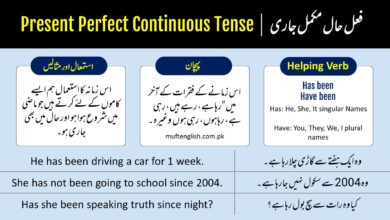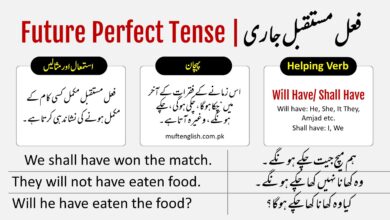Causative Verb HAVE/HAS with English and Urdu Examples
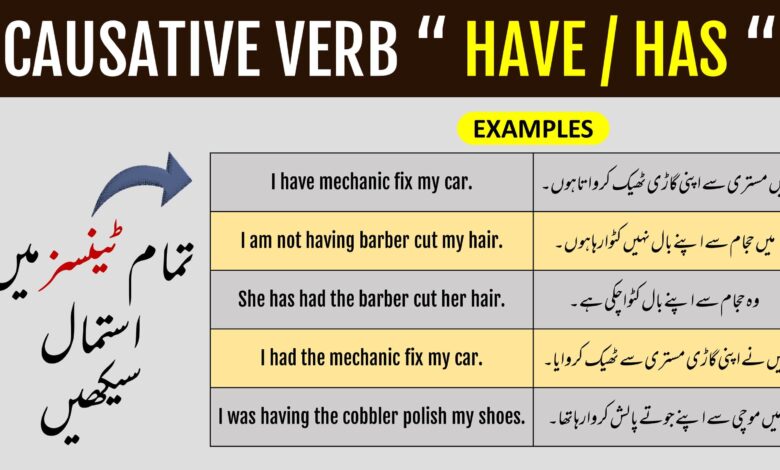
Causative use of HAVE/HAS in Urdu
We usually use “have/has” when we are talking about paying someone to do something for us. It is often used for services.
اس کو ہم کسی کو اپنے لئے ادائیگی کرکےکام کروانے کے بارے میں بات کرنے کےلئے استعمال کرتے ہیں۔
یعنی، آپ نے اپنے بال کسی حجام سے کٹوائے مگر آپ نے اُس کا کے بدلےاُسے پیسے دئیے۔ اس لئے جب کسی کو ادائیگی کرکےکام کروائیں تو یہ الفاظ استعمال کرتے ہیں۔
Use of Causative Verb HAVE/HAS in Present Indefinite Tense
Structure: Subject + Causative verb (have/has) + Agent + Verb 1st form + Object + .
We use in the third person singular e.g. (he, she, it, Akram) and we use the causative verb have with (I, we, you, they, and plural subjects)
| I have a mechanic fix my car. | میں مستری سے اپنی گاڑی ٹھیک کرواتا ہوں۔ |
| He does not have the painter paint the room. | وہ رنگ ساز سے کمرہ رنگ نہیں کرواتا ہے۔ |
| Do you have the barber cut your hair? | کیا تم حجام سے بال کٹواتے ہو؟ |
Use of Causative Verb HAVE/HAS in Present Continuous Tense
Structure: Subject + Helping verb (is, are, am) + Causative verb (have/has + ing) + Agent + Verb 1st form + Object + .
We cannot use the causative verb “has + ing” so with all the subjects we use the causative verb (have + ing) in the present continuous tense.
| He is having the cobbler polish his shoes. | وہ موچی سے اپے جوتے پالش کروارہا ہے۔ |
| I am not having a barber cut my hair. | میں حجام سے اپنے بال نہیں کٹوارہا ہوں۔ |
| Is he having Mason build his room? | کیا وہ مستری سے اپنا کمرہ تعمیرکروارہا ہے؟ |
Use of Causative Verb HAVE/HAS in Present Perfect Tense
Structure: Subject + Helping verb (Have/has) + Causative verb (had) + Agent + Verb 1st form + Object + .
The first have/has is the helping form of the present perfect tense and “had” is the third form of the causative verb (has/have).
| You have had the cobbler polish your shoes. | تم موچی سے اپنے جوتےکرواچکے ہو۔ |
| I have not had the mason build my house. | میں مستری سے اپنا گھرتعریف نہیں کرواچکاہوں۔ |
| She has had the barber cut her hair. | وہ حجام سے اپنے بال کٹواچکی ہے۔ |
Use of Causative Verb HAVE/HAS in Present Perfect Continuous Tense
Structure: Subject + Helping verb (Have been/has been) + Causative verb (have + ing) + Agent + Verb 1st form + Object + Since/for .
| He has been having the barber cut his hair for 2 hours. | وہ دو گھنٹوں سے حجام سے اپنے بال کروارہی ہے۔ |
| I have not been having the cobbler polish my shoes for two days. | میں دودنوں سے موچی اپنے جوتے پالش نہیں کروارہاہوں۔ |
| Has he been having the mason build his house for 3 months? | کیا وہ تین مہینوں سےمستری سے اپنا گھرتعمیرکروارہا ہے؟ |
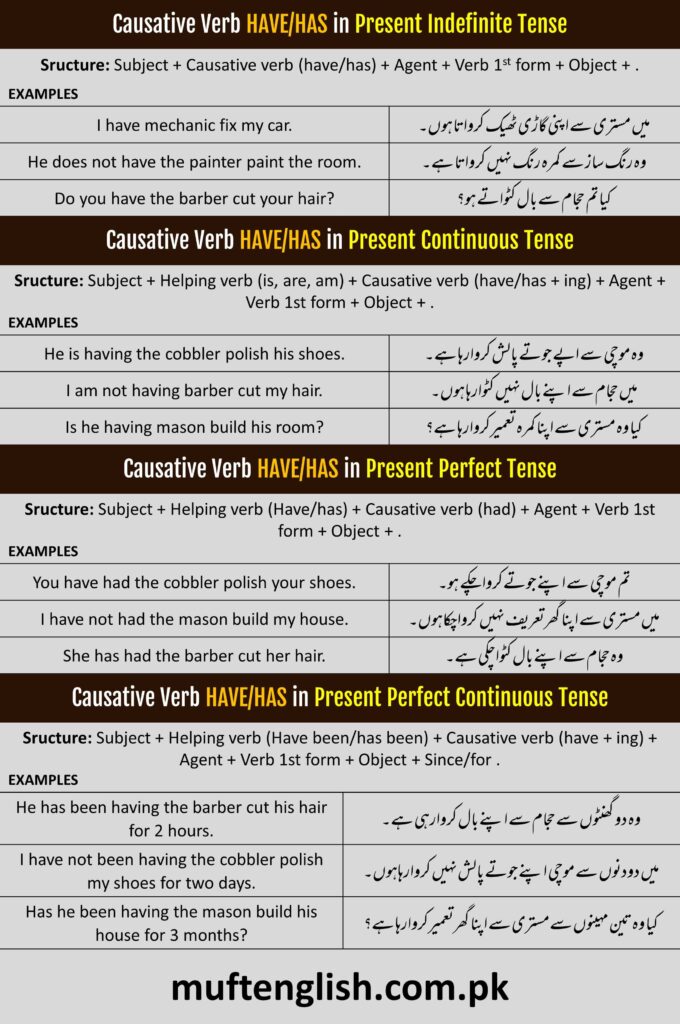
Use of Causative Verb HAVE/HAS in Past Indefinite Tense
Structure: Subject + Causative verb (had) + Agent + Verb 1st form + Object + .
As we know we use the 2nd form of the verbs in the present indefinite tense so here we are changing the causative verb (have) into 2nd form had. In negative and interrogative sentences when the helping verb did come then we will use the causative verb first form (have)
| I had the mechanic fix my car. | میں نے اپنی گاڑی مستری سے ٹھیک کروایا۔ |
| He did not have the barber cut his hair. | وہ حجام سے اپنے بال نہیں کٹوایا۔ |
| Did you have the painter paint your room? | کیا تم نے رنگ ساز سے اپنا کمرہ رنگ کروایا؟ |
Use of Causative Verb HAVE/HAS in Past Continuous Tense
Structure: Subject + Helping verb (was/were) + Causative verb (have/has + ing) + Agent + Verb 1st form + Object + .
| I was having the cobbler polish my shoes. | میں موچی سے اپنے جوتے پالش کروارہا تھا۔ |
| She was not having the painter paint her house. | وہ اپنا گھررنگ ساز سے رنگ نہیں کروارہی تھی۔ |
| Were you having Mason build your room? | کیا آپ مستری سے اپنا گھرتعمیرکروارہے تھے؟ |
Use of Causative Verb HAVE/HAS in Past Perfect Tense
Structure: Subject + Helping verb (had) + Causative verb (had) + Agent + Verb 1st form + Object + .
Below one “had” is the helping verb of past perfect tense and the 2nd “had” is the third form of the causative verb “have”.
| I had had the barber cut my hair. | میں حجام سے اپنے بال کٹواچکاتھا۔ |
| Akram had not had the cobbler polish his shoes. | اکرم موچی سے اپنے جوتے پالش نہیں کرواچکی تھی۔ |
| Had you had the painter paint your room? | کیا آپ رنگ ساز سے اپنا کمرہ رنگ کر |
Use of Causative Verb HAVE/HAS in Past Perfect Continuous Tense
Structure: Subject + Helping verb (had been) + Causative verb (have + ing) + Agent + Verb 1st form + Object + Since/for .
| She had been having the cobbler polish her shoes since morning. | وہ صبح سے اپنی جوتے موچی سے پالش کروارہی تھی۔ |
| He had been having the mason build his office for 1 year. | وہ ایک سال سے اپنا دفتر مستری سے بنوارہا تھا۔ |
| Akram had not been having a painter paint the house for 2 days. | اکرم دو دنوں سے اپنا گھر رنگ ساز سے رنگ نہیں کروارہاتھا۔ |
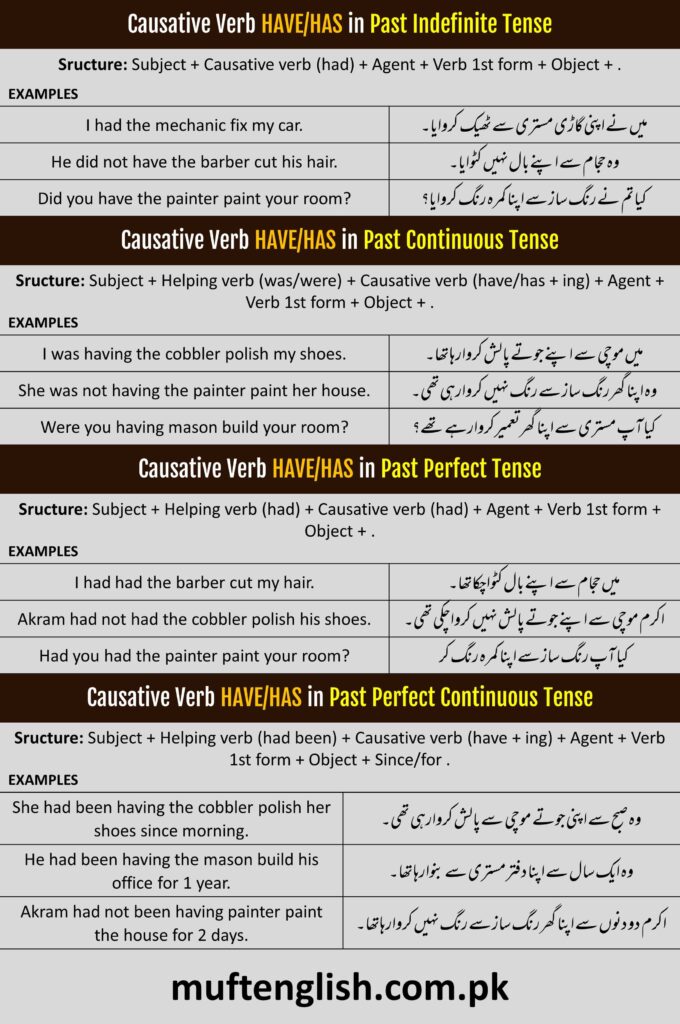
Use of Causative Verb HAVE/HAS in Future Indefinite Tense
Structure: Subject + Helping Verb (shall/will) + Causative verb (have) + Agent + Verb 1st form + Object + .
| I shall have the painter paint my room. | میں اپنا کمرہ رنگ ساز سے رنگا کرواوں گا۔ |
| She will have the barber cut her hair. | وہ اپنے بال حجام سے کٹوائے گی۔ |
| Will you have the cobbler polish your shoes? | کیا آپ موچی سے اپنے جوتے پالش کرواؤگے؟ |
Use of Causative Verb HAVE/HAS in Future Continuous Tense
Structure: Subject + Helping verb (will b / shall be) + Causative verb (have/has + ing) + Agent + Verb 1st form + Object + .
| I shall be having the painter paint my house. | میں رنگ ساز سے اپنا گھررنگ کروارہاہوں گا۔ |
| He will not be having the cobbler polish his shoes. | وہ اپنے جوتے موچی سے رنگ نہیں کروارہا ہو گا۔ |
| Will you be having the barber cut your hair? | کیا آپ حجام سے اپنے بال کٹوارہے ہوگے؟ |
Use of Causative Verb HAVE/HAS in Future Perfect Tense
Structure: Subject + Helping verb (Shall have/ will have) + Causative verb (had) + Agent + Verb 1st form + Object + .
| Akram will have had the mason build his house. | اکرم مستری سے اپنا گھرتعمیرکروا چکاہوگا۔ |
| I will have had the barber cut my hair. | میں حجام سے اپنے بال کٹوا چکا ہوں گا۔ |
| Will Akram have had the painter paint his room? | کیا اکرم رنگ ساز سے اپنا کمرہ رنگ کرواچکا ہو گا؟ |
Use of Causative Verb HAVE/HAS in Future Perfect Continuous Tense
Structure: Subject + Helping verb (Shall/will have been) + Causative verb (have + ing) + Agent + Verb 1st form + Object + Since/for .
| I shall have been having the cobbler polish my shoes for 2 hours. | میں دو گھنٹوں سے موچی سے اپنے جوتے پالش کروارہا ہوں گا۔ |
| He will not have been having the painter paint his room since morning. | وہ صبح سے رنگ ساز سے اپنا کمرہ رنگ کروارہا ہو گا۔ |
| Will you have been having the barber cut your hair for 1 hour? | کیا ایک گھنٹے سے آپ حجام سے اپنے بال کٹوا رہے ہو گے؟ |
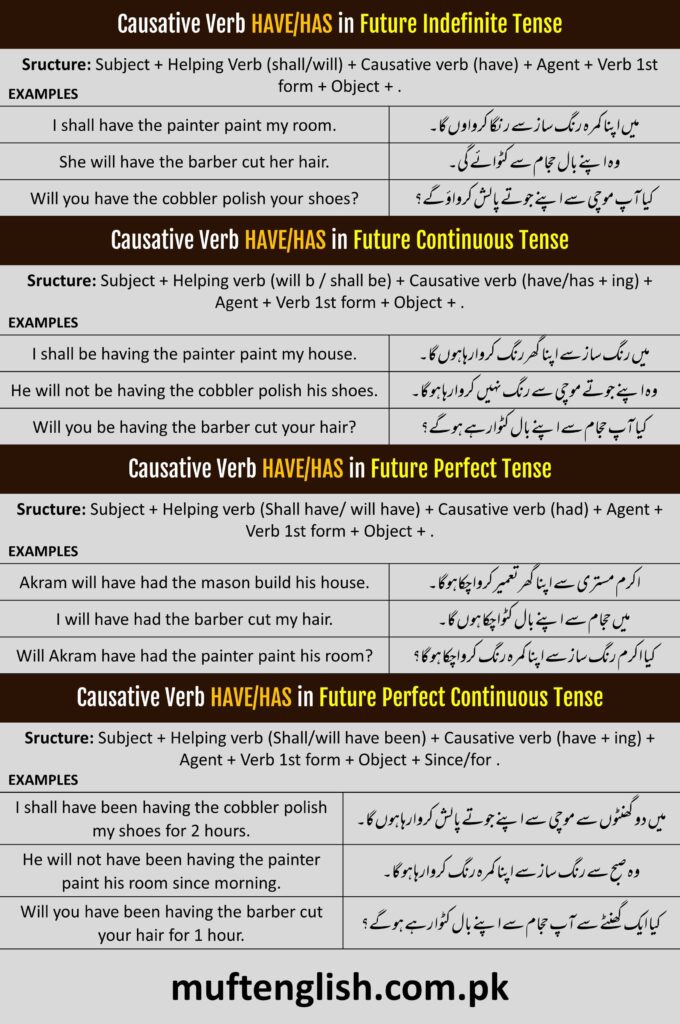
Read: Use of causative verb Make in English with Examples
Causative Verb HAVE/HAS with Examples in English and Urdu PDF
Get the PDF lesson on the causative verb have/has with English and Urdu examples. Read all the structures and examples carefully and make at least 10 example sentences using the following structures.


